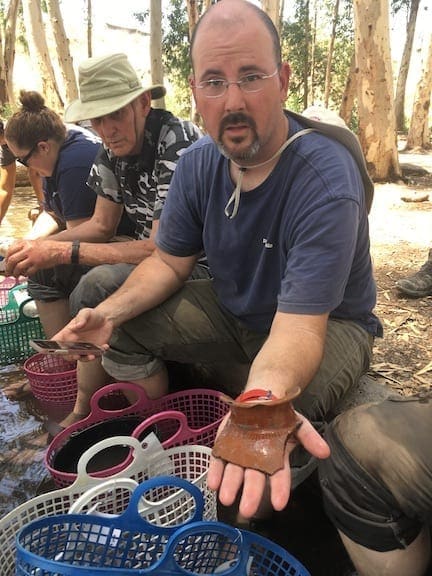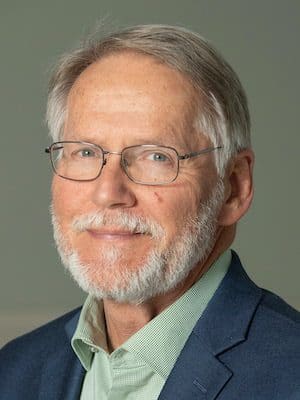Participants on the Campbell University Divinity School/Nurturing Faith Experiences Jezreel Dig team have much to share about their thoughts and experiences, and I’m posting a few along the way. All students received scholarship help from the Snellings Fund. Several participants also benefitted from a generous gift by an anonymous donor, and they want to express appreciation.
John Robert Harris is a CUDS student and associate pastor of Faith Fellowship Church in Kinston, NC. He also works with Boy Scouts and especially enjoys teaching less enthusiastic children to swim.
Once people learned about my plans to travel to Israel, they have been telling me what I would experience and how I would emotionally respond. Truthfully, I have not expressed myself emotionally over the biblical sites, but rather was awed at their presence, their relatively close proximity and how they played a roll in biblical history. Witnessing and experiencing the caves at Qumran, the Temple Mount in Jerusalem, the history of Meggido, standing in the Jordan River; then seeing Nazareth, Mt. Tabor, Mt. Moreh, and Mt. Gilboa all in the Jezreel Valley have connected many dots, if you will, of the stories I have studied over the years.
Stepping into an ongoing archaeological dig in Jezreel has furthered my connection with the Bible as well as scratched my itch for discovery. It has been a delight to join the Jezreel team in order to learn more about the people and their culture dating back to the Middle and Early Bronze ages.
As a child my brother and I found a hill, you could call it our own Tel, in the middle of the woods next to our home. We loved to play and dig on it as much as daylight afforded us. What we did not know at the time was the source of the hill we enjoyed as kids. As we dug we found relics of ages past. We found Depression glass, silver flatware, and utensils long forgotten due to technological progress. Neighbors soon shared in our treasures and spoke of a home that was leveled many years back. The growth of trees around the remains soon enveloped it and became a forest. Needless to say, it created a hunger within me to discover and understand the people my finds represented.
My love for discovery has poured into my love for history as well as biblical studies. Participating in the archaeological dig in Jezreel has afforded me the proper methods of uncovering and discovering cultures of ages long past. I have journaled every evening in order to reflect upon my time in Israel once I return home. My time here will forever stay with me, and I pray will continue to teach me years from now.
Lastly, I am grateful for the many people who have invested in me to experience this journey. Thank you for your commitment to help aspirant amateur archaeologists afford the weighty expenses of trips like the one here at Jezreel.
Karie Parkes is a graduate of CUDS who now works as Director of Student Activities for Campbell University. Here’s her story:

Karie takes a break from visiting ruins around the southwest corner of the Temple Mount in Jerusalem.
So, I really didn’t plan to come on this trip at all. When I heard about it, I thought “Wow, that sounds cool and interesting,” but I knew I really couldn’t afford it. Then I joked with Joyce Mashtare about whether there was a discount for either alumni or faculty/staff, and she actually asked Dr. Cartledge. He came back with “Sure, we can help you out,” and here I am!
I cannot thank those who helped me get here enough. I was able to come to Israel on a CUDS study tour nine years ago and never thought I would get to come back. It was really exciting to go visit Jerusalem for a second time and even though I had been before, I got to see new things that we didn’t see previously. For example, we went to a section of the Western Wall where both men and women can visit together.
As far as the dig is concerned, I don’t mind getting up at 4:00 a.m., because it means I get to watch the sunrise every day. I don’t mind the manual labor or lots of uphill walking: it’s helping me get in better shape and getting me to drink more water. I enjoy digging through the dirt in hopes of finding something special or even just more pottery (there is a ton of it). I like the lectures and field trips, where we get to hear from archeologists talk about the things we see here.
My goal is hopefully to get a PhD in Old Testament/Hebrew Bible. For me, coming here was an academic affair. Come, see the sites and the ruins, and perhaps absorb a bit of culture. This is, of course, exactly what we have done.
Nevertheless, in a much more unexpected way, the trip has affected me spiritually. From standing on the Mt. of Olives to watching pilgrims driven to tears, I have come to have a more complete picture of the Bible. Even though some of the sites may be less than authentic (simply because there is no sign from Jesus’ day that says, “Jesus was crucified here,” there must be some guesswork at play in a few places), or gussied up such that you can’t even see the location itself, being in the ‘Holy Land’ has helped me to feel some of the things in the Bible better.
None of this, however, is to say that my academic side has not been challenged as well; physically participating in the dig has helped me to understand things in ways that I never thought that I would. Co-directors Jennie Ebeling and Norma Franklin’s expertise is remarkable. From Norma’s etymological wizardry (and much more) to Jennie’s ability to date the shaping of a slab of basalt to the Neolithic era, I am consistently in awe of their never-ending stream of archaeological and historical know-how.
Thanks so much to the scholarship donors who made this trip possible.








